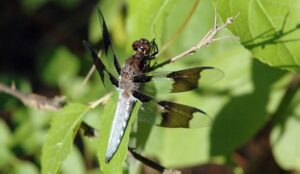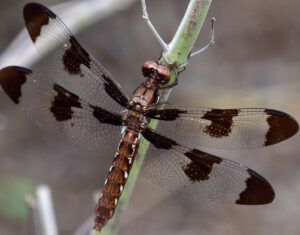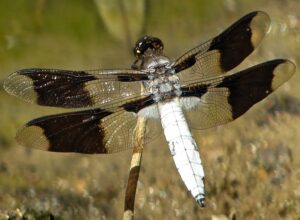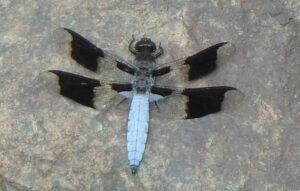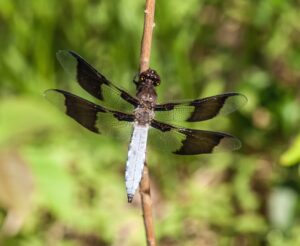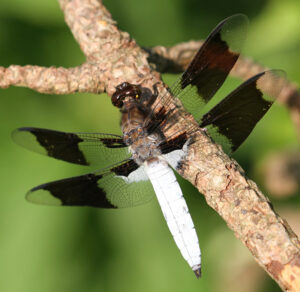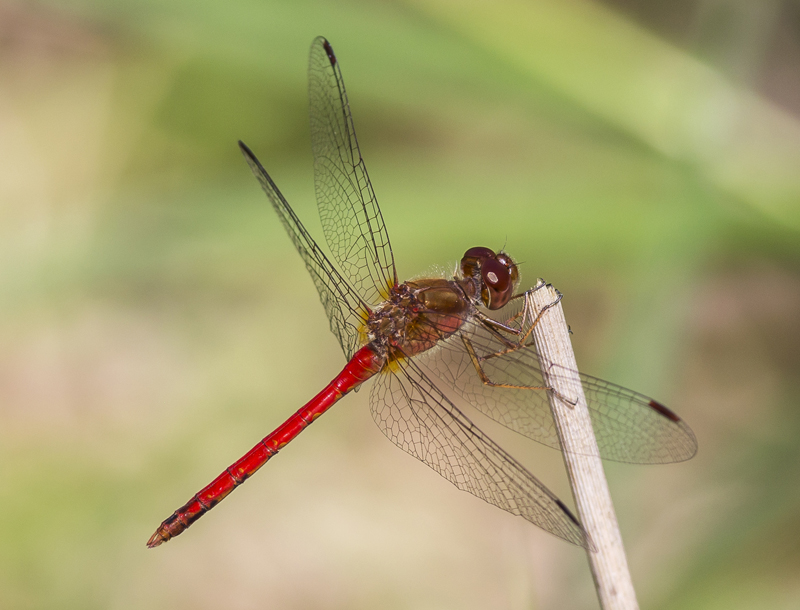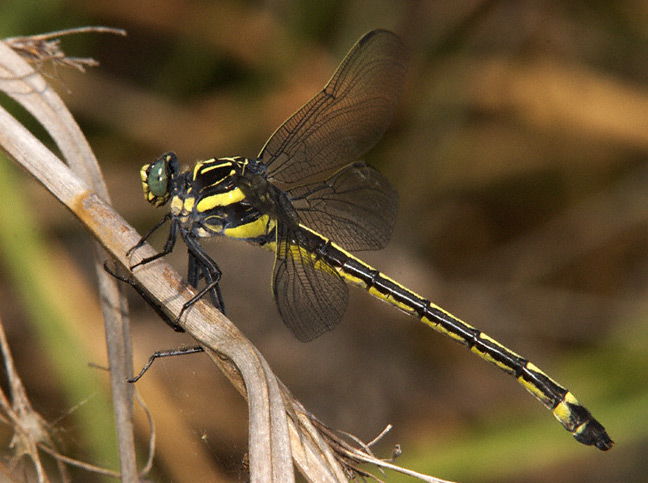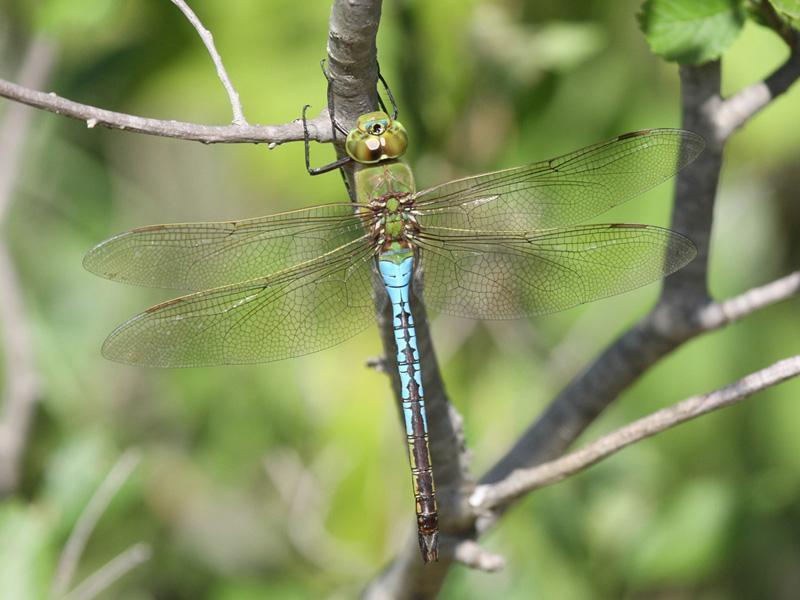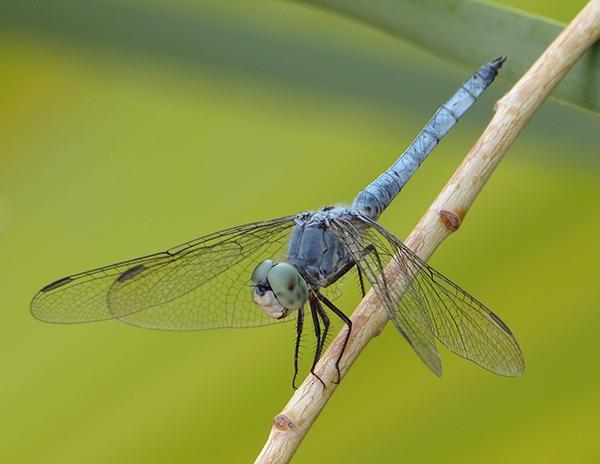Common Whitetail (Plathemis lydia)
Updated on
17/11/2022The striking and unusual-looking common whitetail, also known as the long-tailed skimmer and common whitetail skimmer, is a very common, medium-sized dragonfly found across North America. They are often seen perching on shoreline vegetation. Their flight season is mid-May to late September.
Scientific Classification
- Class:Insecta
- Order:Odonata
- Suborder:Anisoptera
- Family:Libellulidae
- Genus:Plathemis
- Species:P. lydia
Conservation Status
Description
The male has a bulky body of around 2 inches (5 cm) length. Its white body and brownish-black bands on its translucent wings give them a checkered look. On the other hand, the females have brown bodies with a different pattern on the wings that closely resembles the twelve-spotted skimmer. They are smaller in size with white zig-zag stripes on their abdomens.
The long-tailed skimmer’s broad wings and strong muscles make it a swift flyer. To provide the excess energy required for its flight, prothoracic and abdominal stigmata are present (that are non-functional during the aquatic nymph stage) as a part of its complex respiratory system.
Distribution: North America.
Habitat: Ponds, slow-moving rivers, and marshes in all regions barring the higher mountainous ones. They rest on things near water and sometimes on the ground. The territorial males hold possession of a 10-30 m stretch of the water’s edge and patrol it to drive away other males. They often do so by exhibiting the chalky, white-blue abdomens as a threat.
Do They Bite/Sting: No.
Lifespan: 1-8 weeks.
Predators: Frogs, praying mantids, fish, birds, raccoons, and spiders.
Behavior and Characteristics
Diet
Common whitetails have mosquitoes and tiny flying insects as their food.
Life Cycle
1. Egg Stage
The females need to find a suitable location to lay eggs or ovipost, as it affects the success of reproduction. Temperature plays a very significant role here. The eggs are often deposited on mud, water, or even vegetation. They are laid on multiple locations spread away from each other and in small water bodies avoiding fish predation to increase the offspring’s chances of survival.
2. Nymph Stage
The dark green or brown nymphs or naiads are usually covered with algae. They can be found on aquatic invertebrates like small crayfish, mayfly larvae; and aquatic vertebrates like minnows and tadpoles. Due to their easy availability and abundance, they are eaten by frogs, fish, birds, and other aquatic insects. Hence the naiads have a 99.9% mortality rate.
3. Adult Stage
Every few days, the females go to the ponds to select a partner to mate. A male uses his territorial defense tactics and developed flight muscles to compete with other males to unite with a female. Once copulation is complete, he guards her against other males wanting to mate till she oviposts shortly afterward. The common whitetail doesn’t offer parental care.
Source
marylandbiodiversity.com, dl-digital.com, baynature.org, peinaturetracker.ca, michaelqpowell.com, wiatri.net, auth1.dpr.ncparks.gov




